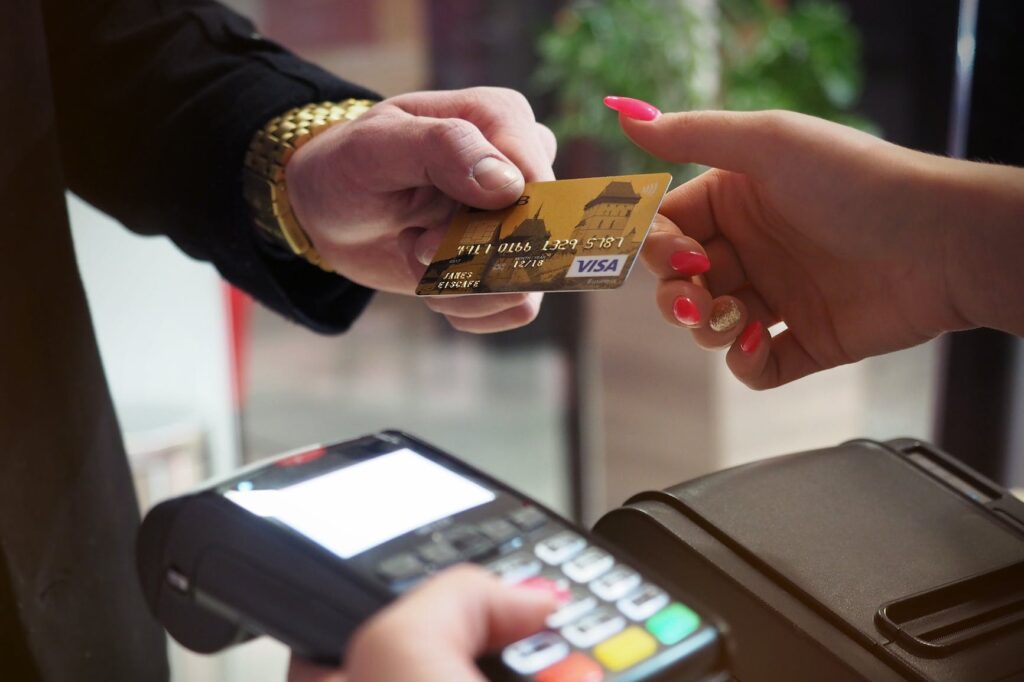Contents
- 1 Understanding OTP for International Transactions
- 2 Challenges with OTP for International Transactions
- 3 Solutions for OTP Delivery on International Roaming
- 4 Ensuring Smooth Authentication while Traveling Abroad
- 5 OTP Considerations for NRI Banking
- 6 Managing OTP for NRI Banking while Abroad
- 7 Tips for Successful OTP Delivery while Abroad
- 8 OTP Considerations for NRI Banking
Understanding OTP for International Transactions
In the realm of online transactions, the use of One-Time Passwords (OTP) plays a crucial role in ensuring the security of these transactions. OTP, as the name suggests, is a unique password that is valid for a single use or a short period of time. Let’s explore what OTP is and why it is important in transactions.
What is OTP and its Importance in Transactions
An OTP is a temporary password that adds an extra layer of security to various types of transactions, including online purchases, banking transactions, and payment app transactions. It is typically sent to the user’s registered mobile number or email address. The user must enter the OTP within a specified time frame to authenticate the transaction.
The importance of OTP in transactions lies in its ability to verify the identity of the user and protect against unauthorized access and fraudulent activities. By requiring the user to enter the OTP, it ensures that only the authorized individual with access to the registered mobile number or email address can complete the transaction. This helps safeguard sensitive information, such as credit card details or banking credentials, from being misused.
The Role of OTP in Ensuring Security
OTP plays a vital role in ensuring the security of transactions by adding an extra layer of authentication. Here are some key roles that OTP plays in securing transactions:
- Preventing Unauthorized Access: By requiring the entry of a unique OTP, transactions are protected against unauthorized access. This helps mitigate the risk of identity theft and fraudulent transactions.
- Real-Time Authentication: OTPs are time-sensitive, typically valid for a short duration. This real-time authentication ensures that the transaction is being authorized by the user at the time it is initiated, reducing the chances of fraudulent activities.
- Protection Against Phishing Attacks: OTPs provide protection against phishing attacks by ensuring that the user is interacting with a genuine platform or service. Phishing attempts that aim to steal login credentials or personal information are rendered ineffective without the valid OTP.
- Enhancing Transaction Security: By combining the use of OTPs with other security measures such as passwords, PINs, and biometric authentication, the overall security of transactions is strengthened. This multi-factor authentication approach reduces the likelihood of unauthorized access and fraudulent activities.
To ensure the effectiveness of OTP in securing transactions, it is important for users to keep their registered mobile numbers or email addresses up to date with the relevant service providers. This ensures that OTPs are delivered to the correct authorized individuals and enhances the overall security of the transaction process.
Having understood the significance of OTP in transactions, it is crucial to address the challenges that may arise when using OTPs for international transactions. In the following section, we will explore the challenges related to network restrictions, policies, and receiving OTPs while roaming.
Challenges with OTP for International Transactions
When it comes to international transactions, there can be challenges with receiving One-Time Passwords (OTPs) while roaming. These challenges can arise due to network restrictions, policies, and other factors. Understanding these challenges is important for individuals who rely on OTPs for secure transactions.
Network Restrictions and Policies
Network restrictions and policies play a significant role in the delivery of OTPs while roaming internationally. Some service providers may have specific policies in place that prevent the delivery of OTPs while a user is roaming. This is done to ensure the security of the OTP and minimize the risk of unauthorized access to sensitive information. These restrictions may vary from one service provider to another, so it’s important to familiarize yourself with the policies of your specific provider.
According to a Reddit user, there have been instances where the request for OTPs while roaming was blocked due to network policies. This suggests that there may be restrictions or security measures in place that prevent OTPs from being received while roaming internationally.
To know if your service provider allows OTP delivery while roaming, it’s recommended to check their policies and guidelines or reach out to customer support for clarification. This will help you understand any potential limitations and how they might affect your ability to receive OTPs while abroad.
Issues with Receiving OTPs while Roaming
Receiving OTPs while roaming can sometimes be challenging due to the way these messages are routed across networks internationally. Network compatibility issues, service restrictions, or security protocols can impact the delivery of OTPs to your mobile device while you are roaming.
Freedom Mobile, for example, acknowledges that customers roaming on international networks may experience issues with receiving OTPs. This indicates that there may be factors beyond your control that can affect the delivery of OTPs while you are abroad.
It’s important to note that while many users do receive OTPs while abroad, some users may encounter difficulties due to the various factors mentioned above (eSIM Radar). Service providers have different approaches to OTP delivery, so it’s crucial to understand the options available to you and any potential limitations before traveling abroad.
To ensure smooth authentication while traveling and to mitigate the impact of potential issues with OTP delivery, it’s advisable to prepare alternative authentication methods. This could include using a trusted device, setting up backup options like email verification or security questions, or exploring other secure authentication methods offered by your service provider.
By being aware of the challenges associated with OTP delivery for international transactions, you can take the necessary steps to minimize any potential disruptions and ensure the security of your transactions while abroad.
Solutions for OTP Delivery on International Roaming
When it comes to receiving one-time passwords (OTPs) for international transactions, there can be challenges due to network restrictions and policies. However, there are solutions available to ensure a seamless OTP delivery process while roaming internationally.
Alternative Methods for OTP Delivery
One solution for receiving OTPs while on international roaming is to explore alternative methods of delivery. Instead of relying solely on SMS text messages, which may not always be reliable internationally, consider utilizing other options such as:
- Email: Some service providers offer the option to receive OTPs via email. This method can be a more reliable alternative, especially if you have access to a stable internet connection while abroad.
- Authentication Apps: Utilizing authentication apps, such as Google Authenticator or Authy, can provide a secure and reliable way to receive OTPs. These apps generate time-based OTPs directly on your device, eliminating the need for SMS delivery.
- Backup Phone Numbers: Some platforms allow users to register a backup phone number for OTP delivery. This serves as an additional option if your primary mobile number is unable to receive OTPs while roaming.
By diversifying the methods for OTP delivery, you can enhance the chances of receiving the necessary codes even when SMS delivery is unreliable internationally. However, it’s crucial to ensure the security of the alternative methods chosen and follow best practices to protect your personal information.
Contacting Customer Support for Assistance
If you encounter issues receiving OTPs while on international roaming, reaching out to the customer support team of your service provider or the platform you are transacting with can be helpful. Customer support representatives are trained to assist users with account-specific troubleshooting and can provide guidance on alternative solutions for OTP delivery.
Before contacting customer support, make sure to gather all relevant information, such as your account details, transaction information, and any error messages encountered. This will help expedite the troubleshooting process and enable the support team to provide more accurate assistance.
Remember that different service providers may have varying policies and solutions for OTP delivery on international roaming. It’s essential to check with your specific service provider or platform for the most up-to-date information and instructions regarding OTP delivery while abroad.
By exploring alternative methods for OTP delivery and seeking assistance from customer support when needed, you can ensure a smooth and secure authentication process for your international transactions, even while roaming abroad.
Ensuring Smooth Authentication while Traveling Abroad
When traveling abroad, it’s essential to understand how OTP delivery works across networks to ensure a smooth authentication process for your transactions. Additionally, preparing alternative authentication methods can be helpful in case you encounter issues with receiving OTPs while on international roaming.
Understanding OTP Delivery Across Networks
Receiving one-time passwords (OTPs) while roaming internationally can sometimes be challenging due to network restrictions and policies. Some networks may have security measures in place that prevent OTPs from being received while on international roaming (Reddit). The way these OTP messages are routed across networks internationally can also contribute to delivery issues.
To ensure a smooth OTP delivery process, it’s important to check with your service provider regarding their policies and any potential limitations on OTP delivery while roaming. Understanding these policies can help you make informed decisions and find suitable alternatives for authentication.
Preparing Alternative Authentication Methods
When OTP delivery is unreliable internationally, it’s crucial to have alternative authentication methods in place to ensure secure access to your accounts and complete transactions. Here are some alternative methods you can consider:
- Email: Some platforms offer the option to receive OTPs via email instead of SMS. Make sure your email address is updated and linked to your account for this purpose.
- Phone calls: Certain services may provide OTPs through automated phone calls. Ensure that the phone number registered with your account is up-to-date and can receive calls while abroad.
- Authenticator apps: Authenticator apps, such as Google Authenticator or Authy, generate OTPs without relying on SMS delivery. These apps can be installed on your smartphone and synced with your accounts to provide secure OTPs.
- Backup codes: Many platforms offer the option to generate and store backup codes for two-step verification processes that require OTPs. These codes can be used as an alternative method to authenticate your transactions when OTP delivery is not reliable internationally (Freedom Mobile).
It’s important to note that the availability of alternative authentication methods may vary depending on the platform or service you are using. Prioritize platforms that provide multiple options for OTP delivery to ensure a seamless authentication experience while traveling abroad.
In case you encounter any issues with receiving OTPs while on international roaming, reaching out to the customer support team of the respective platform or service can be beneficial. They can provide account-specific troubleshooting and guidance to help resolve any OTP delivery challenges you may face.
By understanding OTP delivery across networks and preparing alternative authentication methods, you can ensure a smooth and secure authentication process while traveling abroad. Remember to check with your service provider for specific policies and explore different OTP delivery options to maintain the security of your transactions.
OTP Considerations for NRI Banking
When it comes to NRI banking, OTP (One-Time Password) serves as an additional layer of security to protect bank accounts from fraud. Let’s delve into the introduction of OTP in NRI banking and how it relates to receiving OTPs on international mobile numbers.
Introduction to OTP in NRI Banking
OTP in NRI banking is a numeric six-digit code sent to the mobile number registered with the Indian bank. It acts as a verification method for various transactions, including fund transfers, online purchases, and account access. The primary purpose of OTP is to ensure that only the account holder can authenticate and authorize transactions, adding an extra level of security to NRI banking transactions.
Receiving OTPs on International Mobile Numbers
As an NRI, receiving OTPs on your international mobile number is essential to ensure seamless banking transactions while abroad. Many banks, including ICICI Bank, allow NRIs to receive OTPs on their international mobile numbers without any service fees. To enable this, NRIs can change their existing domestic accounts to NRI accounts (such as NRO/NRE Savings accounts) and link their international mobile number, such as a U.S. number, to their account.
By linking your international mobile number to your NRI account, you can continue to receive OTPs for NRI banking while abroad. This ensures that you can securely authorize transactions and access your bank account remotely. Remember to update your contact details with your bank to ensure uninterrupted OTP delivery.
For NRIs who prefer to use their Indian mobile number while abroad, activating a basic roaming plan for the Indian number can help continue receiving OTPs. Telecom companies usually do not charge for unanswered incoming calls and SMS, making it convenient to receive OTPs on your Indian mobile number while overseas (Source).
It’s important to note that the Department of Telecommunication does not require NRIs, including Overseas Citizen of India (OCI) cardholders, to verify their India-based Subscriber Identity Module (SIM) with an Aadhaar card. SIM cards can be verified without the need for an Aadhaar card, allowing NRIs to receive OTPs without any complications (Source).
By understanding the importance of OTP in NRI banking and ensuring the smooth delivery of OTPs on international mobile numbers, NRIs can continue to enjoy secure and convenient banking services while residing abroad.
Managing OTP for NRI Banking while Abroad
If you are an NRI (Non-Residential Indian) banking customer and need to manage OTPs while abroad, there are a few important considerations to keep in mind. Changing domestic accounts to NRI accounts and activating roaming plans for Indian numbers can help ensure smooth OTP delivery for NRI banking transactions.
Changing Domestic Accounts to NRI Accounts
The easiest way to continue receiving OTPs for NRI banking while you are abroad is to change all your existing domestic accounts to an NRI account, such as NRO (Non-Residential Ordinary) or NRE (Non-Residential External) savings accounts. By doing so, you can link your international number, such as your U.S. number, to your NRI account. This allows the OTPs to be sent directly to your international mobile number, ensuring that you can securely authenticate your transactions.
Activating Roaming Plans for Indian Numbers
Another option for managing OTPs while abroad is to activate a basic roaming plan for your Indian number. This allows you to continue receiving OTPs on your Indian mobile number even when you are outside of India. Telecom companies typically do not charge for unanswered incoming calls and SMS (short message service), so you can receive OTPs without incurring additional costs. However, it is advisable to check with your service provider to confirm the specific charges and policies regarding roaming plans for OTP delivery (CompareRemit).
By changing your domestic accounts to NRI accounts and linking your international number or activating a roaming plan for your Indian number, you can ensure that you receive OTPs for NRI banking transactions while you are abroad. It’s important to consider these options to maintain a secure and seamless banking experience, regardless of your location. Additionally, it’s worth noting that the Department of Telecommunication does not require NRIs, including Overseas Citizen of India (OCI) cardholders, to verify their India-based Subscriber Identity Module (SIM) with an Aadhaar card. SIM cards can be verified without Aadhaar cards (CompareRemit).
Tips for Successful OTP Delivery while Abroad
When it comes to international transactions, ensuring the smooth delivery of One-Time Passwords (OTPs) is crucial for transaction security. Here are some tips to help you receive OTPs while abroad.
Checking Service Provider Policies
Before traveling abroad, it’s important to check the policies of your mobile service provider regarding OTP delivery on international roaming. Different service providers may have varying policies and charges related to international roaming and OTP delivery. Some providers may automatically enable international roaming for your number, while others may require you to activate it manually.
To avoid any confusion or unexpected charges, reach out to your service provider’s customer support or refer to their official website for detailed information on their policies and charges. This will help you understand how OTP delivery works while you’re abroad and ensure you have the necessary services activated to receive OTPs.
Verifying SIM Cards without Aadhaar
The Department of Telecommunication does not require Non-Resident Indians (NRIs), including Overseas Citizen of India (OCI) cardholders, to verify their India-based Subscriber Identity Module (SIM) with an Aadhaar card. This means that you can verify your SIM card without needing an Aadhaar card, even if you’re abroad (Source).
To verify your SIM card while abroad, reach out to your service provider’s customer support and follow their specific verification process. They will guide you on the required documents and steps to complete the verification process without an Aadhaar card.
By verifying your SIM card without Aadhaar, you can ensure uninterrupted OTP delivery and stay connected to your banking and transaction services while traveling abroad.
Remember, these tips are specifically for Non-Resident Indian (NRI) banking and international transactions. Each service provider may have their own specific guidelines and processes, so it’s essential to reach out to your service provider for accurate information that pertains to your situation.
To learn more about NRI banking and OTP requirements, please refer to our article on why no OTP for international transactions.
OTP Considerations for NRI Banking
When it comes to international transactions and banking, one-time passwords (OTPs) play a crucial role in ensuring the security of your transactions. However, there are certain considerations to keep in mind, particularly when it comes to NRI (Non-Resident Indian) banking.
Introduction to OTP in NRI Banking
OTP has been introduced as an additional security feature in NRI banking to protect bank accounts from fraud. Typically, OTP is a six-digit numeric code sent to the mobile number registered with the Indian bank. This code is used to authenticate and authorize various transactions.
Receiving OTPs on International Mobile Numbers
For NRIs residing abroad, receiving OTPs on international mobile numbers can be a challenge. However, there are solutions to ensure a smooth OTP delivery process.
The easiest way to continue receiving OTPs for NRI banking while abroad is to change all your existing domestic accounts to NRI accounts, such as NRO/NRE savings accounts, and link your international number, such as your U.S. number, to these accounts. This ensures that OTPs are sent to your international mobile number without any disruptions.
Most banks, including ICICI Bank, do not levy any service charges for OTPs sent to international mobile numbers, making it a convenient and cost-effective solution (CompareRemit).
If you prefer to keep your Indian mobile number active while abroad, you can activate a basic roaming plan for your Indian number. Telecom companies typically do not charge for unanswered incoming calls and SMS (short message service). However, it is advisable to check with your service provider to confirm any charges or specific conditions that may apply (CompareRemit).
Changing Domestic Accounts to NRI Accounts
To ensure a seamless OTP delivery experience, changing your domestic accounts to NRI accounts is highly recommended. By doing so, you can link your international mobile number and continue receiving OTPs without any interruptions. This step is particularly important for NRIs who frequently engage in international transactions and want to maintain the security of their accounts.
Activating Roaming Plans for Indian Numbers
If you prefer to receive OTPs on your Indian mobile number while abroad, activating a roaming plan is essential. This ensures that you can stay connected and receive OTPs without any issues. Remember to check with your service provider to understand the specific terms and conditions of the roaming plan, including any charges that may apply.
It’s worth noting that the Department of Telecommunication does not require NRIs, including Overseas Citizen of India (OCI) cardholders, to verify their India-based Subscriber Identity Module (SIM) with Aadhaar cards. Therefore, you can verify SIM cards without Aadhaar, simplifying the process of managing OTPs while abroad.
By understanding the considerations and implementing the recommended steps, you can ensure a smooth and secure OTP delivery process for your NRI banking needs while residing abroad. Remember to consult with your bank for specific guidelines and instructions to ensure compliance with their OTP requirements.




